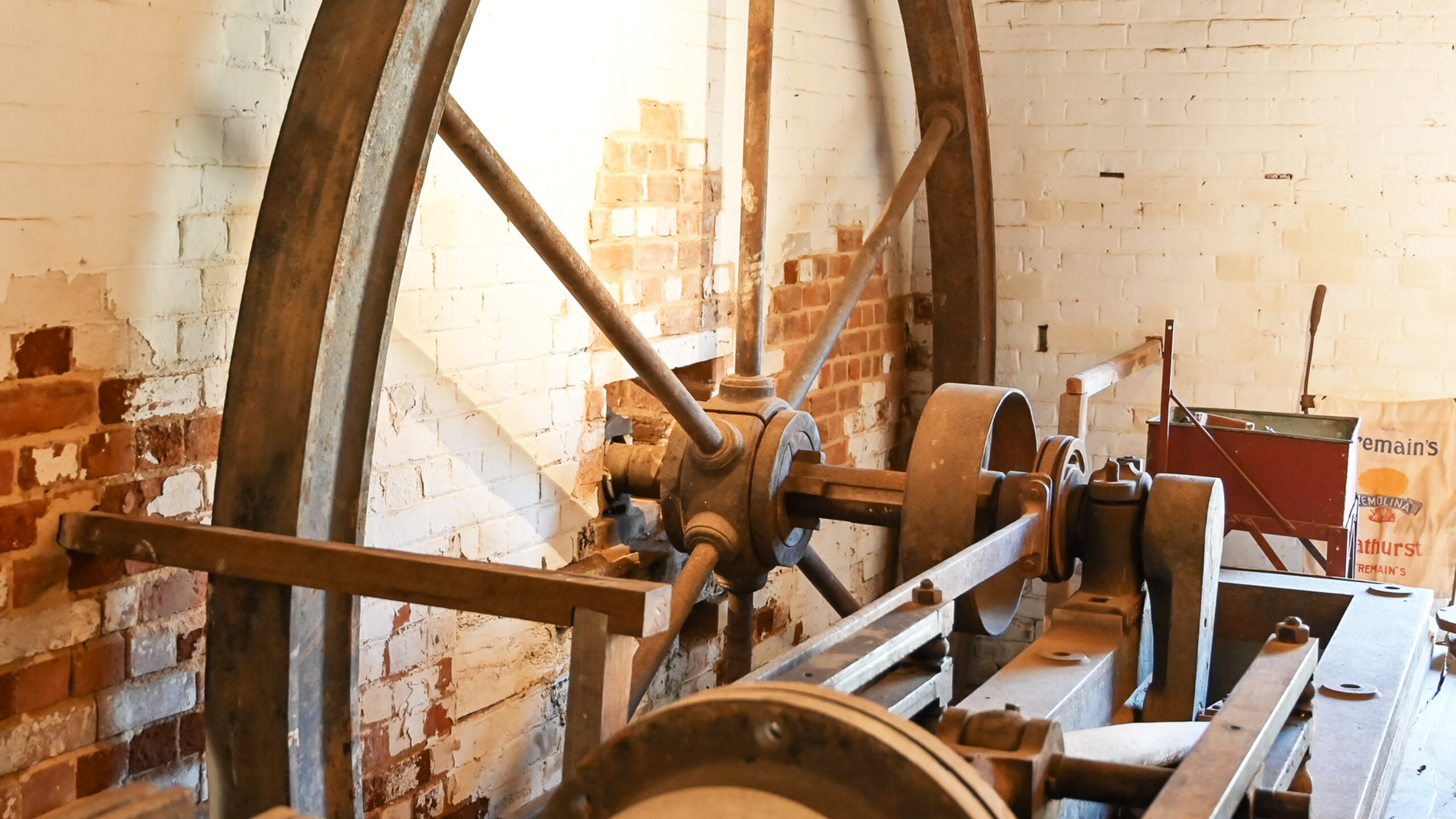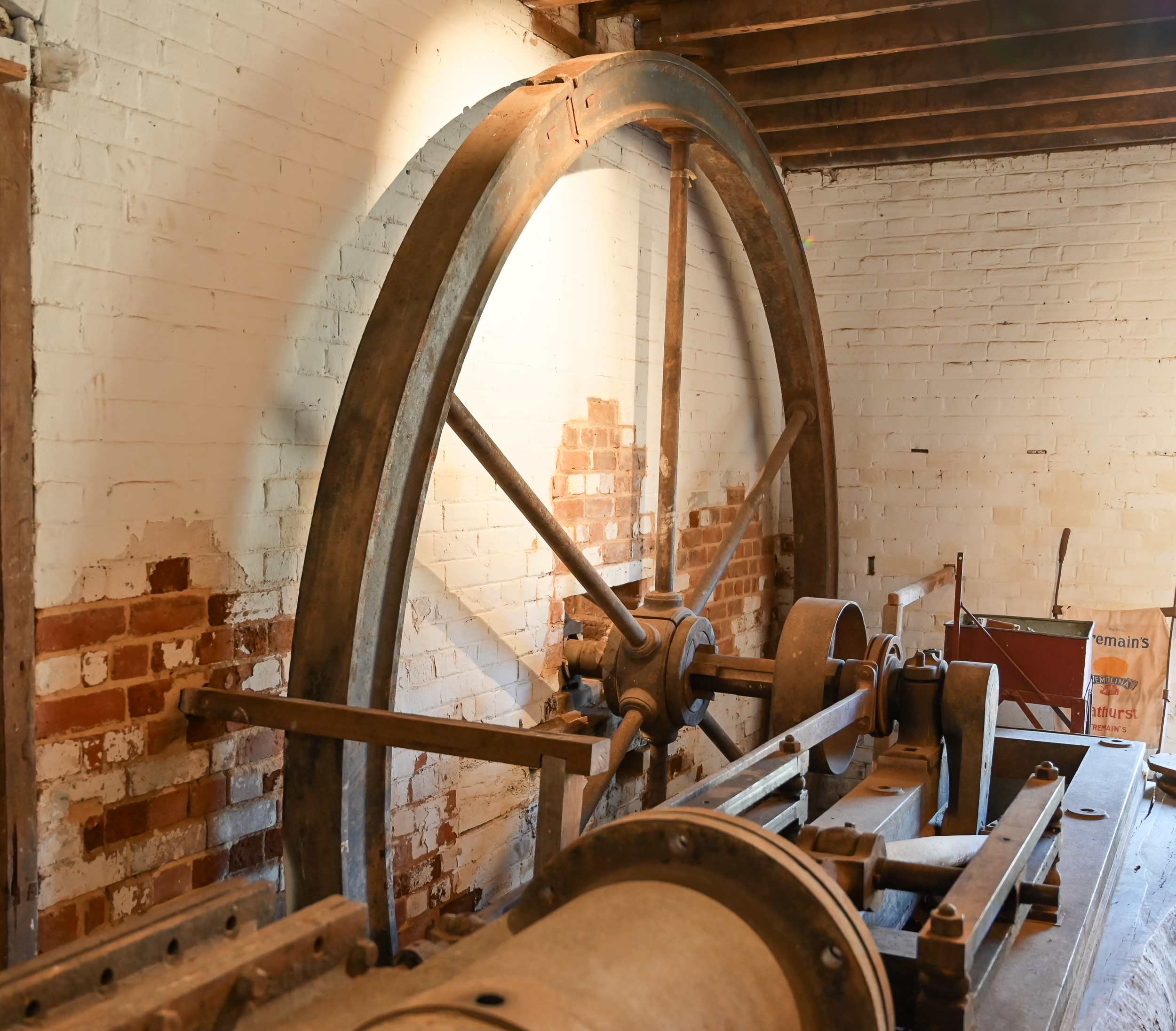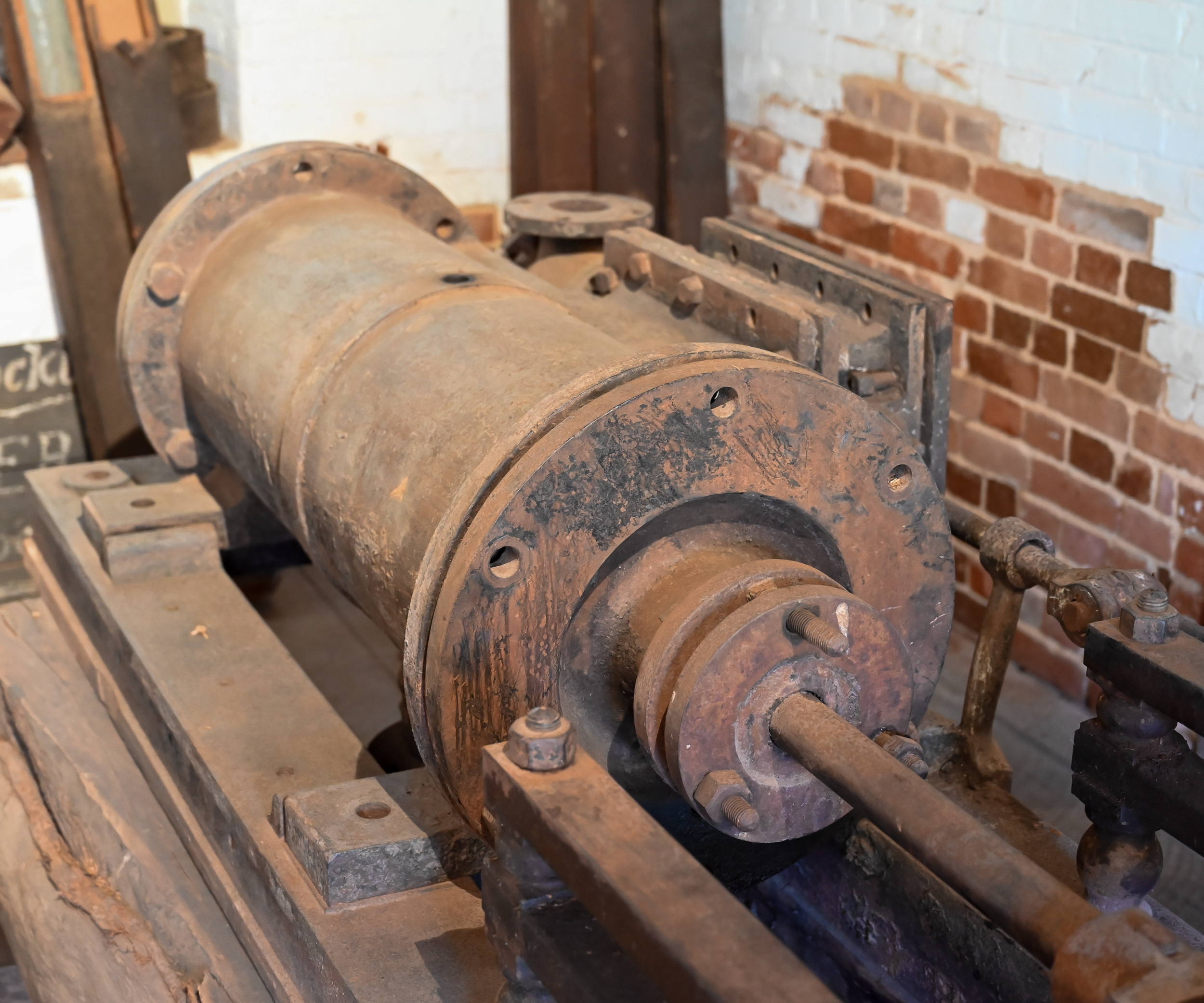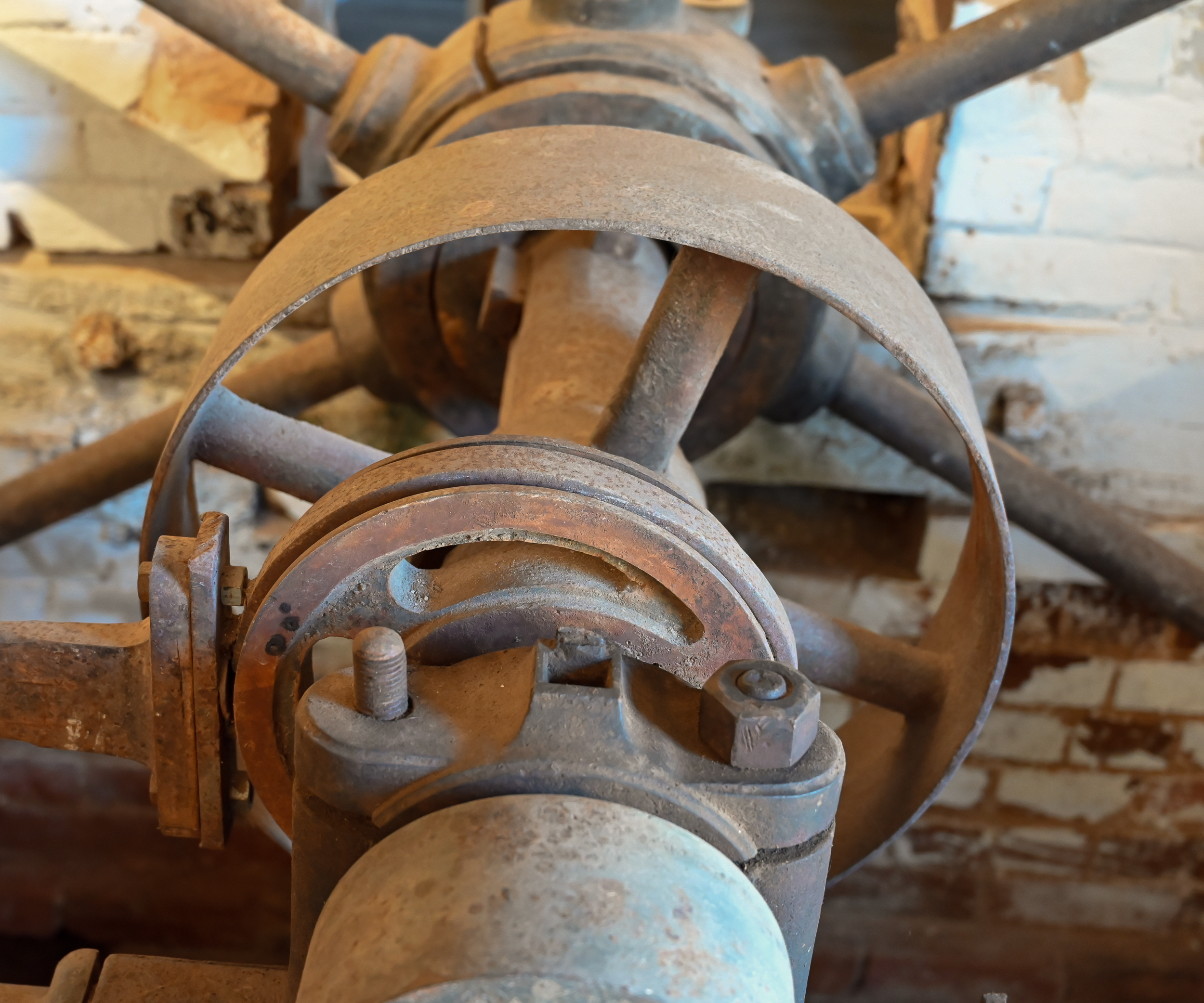Moving Parts
The Lives of Rockley Mill
Although this engine generated less output than a modern ride-on mower, its life story reveals part of the agricultural, industrial and mining history of Rockley. The engine was installed in the western end of J.C. Stanger’s newly built flour mill in Rockley which started operation in 1862.
This engine was powered by steam generated by a boiler housed outside of the building. As the piston moved it turned the flywheel which transferred the power to a spindle connected to the mill-stones located on the first floor of the building. At the height of its operation the mill operated day and night and was advertised by Stanger as capable of grinding 40,000 bushels per annum.
However changes in taste, land-use, and transport developments meant that by the turn of the century the mill and engine were becoming redundant. The use of stone-ground flour declined and improvements in the road network made it easier and cheaper to source flour from Bathurst. Another factor in the making the mill less profitable was the shift away from wheat-growing in the district towards grazing.
In 1903 and 1916 the mill, including this engine, was considered as the site for works to freeze and export rabbits. After these propositions failed, the engine was sold to the Carters’ Hill Gold Company of Sewell’s Creek and used to drive a ten-head stamp battery crushing ore. When the mine closed in the 1930s, the engine was left in place until it was rescued in 1976 by local community members and reinstated to its original position in the mill.
It is a testament to the solidity of this engine, as well as the care and skill taken in its construction, that it has survived over 150 years since it was manufactured. Even after lying abandoned for about forty years, it has been able to maintain its rightful position in the old mill building.






